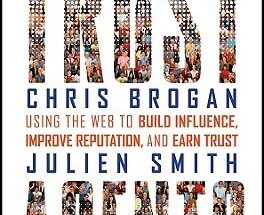A little structural sensor has few millimeter-wide sensors can be used to make wind turbines, ships, and bridges safe. For their device, researchers used a vibrating guitar string as a model for the technique. However, while the sensor’s oscillations will change depending on how the structure to which it is attached behaves, the string must vibrate at a specific frequency to produce the exact tone. These differences can serve as alerts that something is off.
The sensor can detect structural overloading, material flaws, and maintenance requirements in this way—before serious failures take place.
A researcher at SINTEF Digital, Guido Sordo is developing brand-new sensor types that can be employed to safeguard our larger structures and buildings.
A notable example of a construction that would have benefited from the use of a sensor of this kind is the Badderen bridge in the county of Nord-Troms. Last summer, when the bridge gave way, traffic had to be diverted 600 kilometers. It is obvious that such mistakes might have significant time and financial impacts.
Predictive maintenance
According to Sordo, “the failure of only one structure can prove to be highly expensive.” “This is why it is so important to keep an eye on our buildings. This can be accomplished by mounting sensors on objects like bridges, machinery, or ships. “The behavior of the various structures can then be observed using these sensors,” he clarifies.
Things going entirely bad are extremely uncommon. Wind turbines and bridges that are so severely damaged that they collapse are uncommon.
According to Sordo, “the sensors we build are meant primarily to optimize maintenance processes and lower maintenance expenses.” “Problems are discovered at an early stage, making it far easier to predict what has to be done and when,” he claims.
This makes it possible for operators to undertake “predictive maintenance,” or maintenance that is done only when it is required.
An inexpensive technology
In order to monitor structures like buildings and other constructions, a wide range of different sensors can be affixed to them.
There are lots of low-cost sensors available, but Sordo warns that doing so can sacrifice precision and stability over time. “Some have very high performance levels, but they can be quite difficult and expensive to build. Our goal is to create a sensor that is comparable to the best ones now on the market but significantly less expensive “He claims.
Sordo declares, “Our emphasis is on mechanical stress monitoring. According to him, the sensor’s oscillation changes in reaction to minute movements of the structure and predicts exactly what will happen.
From research to product
Just a year after Sordo began working on the project, proof that the sensor is functional was put together, but much more testing and development must be completed before it can be sold.
Sordo is currently working to secure funding and assemble a research team. At the Norwegian conference “The Sensor Decade,” where he presented his work in June of last year, he saw a lot of interest in the sensor and the measurements it is capable of.
According to Sordo, the meeting “builds links between the scientific and commercial sectors.” In the future, he says, “we will be trying to encourage partners to participate in this research,” as they are currently working on the project alone.
Vacuum guarantees accuracy
The sensor is incredibly small, with a filament that is only one millimeter long. Microelectromechanical systems, or MEMS, is the name of the technology.
The sensor in our case is only three by three millimeters across and a quarter of a millimeter thick because the system is so “micro.”
According to Sordo, larger sensors with equivalent oscillating filaments have previously been available on the market. “We have used SINTEF-developed technologies to reduce sensor size and enhance sensor performance. It becomes stable, accurate, and energy-efficient when packaged in a vacuum “He clarifies.


